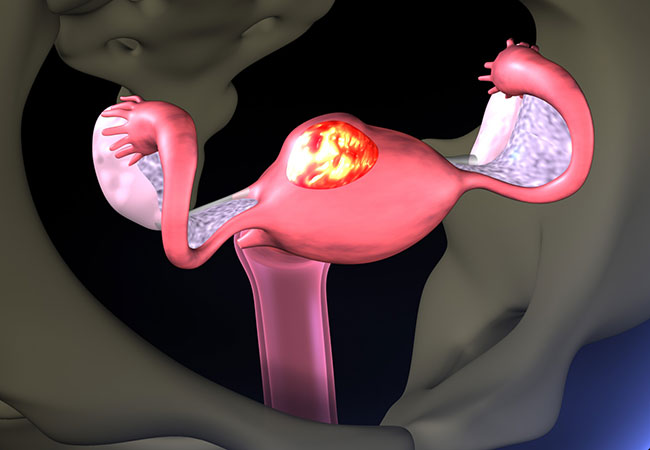Medical Therapy for Uterine Fibroids Draws Nearer as Phase 2 Trial Brings Promising Results
Women with large uterine fibroids suffer with many quality-of-life issues, including limitations on work, travel, hobbies and sexuality. Unfortunately, our treatment options are primarily surgical ‒ hysterectomy or myomectomy. There is a real need for medical options to help these patients, and Cleveland Clinic recently participated in a Phase 2 placebo-controlled dose-related trial (ASTEROID 1) to investigate the progesterone receptor modulator vilaprisan (Bayer Pharma AG) for this purpose. The study was sponsored by Bayer Pharma AG.
As a physician and principal investigator, I looked at this trial with hope and dreams that it could help us add to our toolbox for giving these patients relief. While vilaprisan is still several years away from being ready for “prime time,” the findings from this trial were encouraging.
In ASTEROID 1 (Assess safety and efficacy of vilaprisan in women with uterine fibroids), 309 women age 18 to 50 years of age (mean age, 42) were randomly assigned to one of four vilaprisan doses, 0.5, 1, 2 and 4 mg, or placebo, for a 12-week treatment period, with a 24-week follow-up period. Study participants had to have at least one uterine fibroid of 3-10 cm in diameter and be experiencing heavy menstrual bleeding (at least 80 mL monthly; mean blood loss was 173 mL).
In addition to ultrasound and magnetic resonance imaging of fibroids, the study analyzed laboratory findings and endometrial biopsies. Participants also recorded their impressions of any changes in their condition in electronic diaries and submitted their pads and tampons for analysis of blood quantity.
This was a large multicenter trial, held at 98 sites across 12 countries. This is significant because different cultures can have different views of how women react to pain, discomfort and bleeding. Also, we know that the burden of disease is not the same across all groups. For example, women from the African diaspora tend to experience both earlier onset and comparatively larger fibroids than others.
Results
Overall, investigators were pleased with the results. Up to 40 percent reductions in fibroid size were documented, an effect that was partially sustained during follow up.
Patients reported feeling much better or very much better on the medication, especially those on the higher doses (1, 2 or 4 mg). There were very few adverse events, and no effects on the endometrium in terms of cancer or pre-cancer.
At doses ≥ 1 mg, the majority of patients achieved amenorrhea (< 2 mL/28 days) within 6 days; 87-92 percent achieved it by the end of the treatment course. Most non-placebo patients saw a reduction in their fibroid size during treatment, especially those on the higher doses.
I saw some patients experience dramatic improvement in their symptoms over the course of this study, some of whom I have treated for years. I know how much they have suffered with their condition. Many of them are very eager to have access to the medication again and hope they will be allowed to participate in Phase 3 trials, which are expected to begin early in 2017.
We hope to participate in those trials as well and learn more about which patients are most suited for this treatment. Does it work better in whites than blacks? These and other details will be important information for physicians to have as we seek to provide relief to this patient population.

Medical Therapy for Uterine Fibroids
Share
You must be logged in to post a comment.
